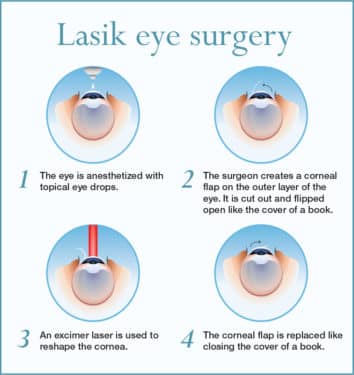Just How Does SMILE Eye Surgery Contrast To LASIK And PRK?
Just How Does SMILE Eye Surgery Contrast To LASIK And PRK?
Blog Article
Material Develop By-Foss Michelsen
If you have actually been thinking about SMILE eye surgery, you might wonder how it compares to LASIK and PRK. Each procedure has its own collection of advantages and considerations. From quicker recovery times to possible risks, there are crucial distinctions you ought to be aware of before choosing. Comprehending these differences will assist you make an informed selection that aligns with your certain requirements and expectations. Curious to recognize even more about exactly how these procedures compare in detail? Go on exploring to gain a comprehensive understanding of SMILE, LASIK, and PRK.
SMILE Eye Surgical Procedure Summary
If you're considering SMILE eye surgical procedure, you'll discover it to be a minimally intrusive treatment with a quick recuperation time. Throughout SMILE (Tiny Laceration Lenticule Extraction), a laser is made use of to develop a small, accurate cut in the cornea to get rid of a tiny piece of cells, improving it to remedy your vision. This differs from LASIK, where a flap is produced, and PRK, where the outer layer of the cornea is entirely removed.
One of the vital benefits of SMILE is its minimally invasive nature, causing a faster healing process and less discomfort post-surgery. The recuperation time for SMILE is relatively quick, with several patients experiencing enhanced vision within a day or two. This makes it a prominent choice for those looking for a convenient and effective vision adjustment treatment. Additionally, SMILE has been revealed to have a lower risk of completely dry eye disorder compared to LASIK, making it a desirable option for individuals concerned about this prospective adverse effects.
Differences In Between SMILE, LASIK, and PRK
When comparing SMILE, LASIK, and PRK eye surgeries, it's important to understand the unique strategies made use of in each procedure for vision correction.
SMILE (Tiny Cut Lenticule Removal) is a minimally invasive procedure that involves producing a small cut to remove a lenticule from the cornea, reshaping it to deal with vision.
LASIK (Laser-Assisted In Situ Keratomileusis) involves creating a slim flap on the cornea, utilizing a laser to reshape the underlying cells, and afterwards rearranging the flap.
History Of LASIK (Photorefractive Keratectomy) eliminates the outer layer of the cornea prior to reshaping the cells with a laser.
Rosacea Eyes lies in the means the cornea is accessed and treated. SMILE is flapless, making it an excellent option for people with thin corneas or those involved in get in touch with sports. LASIK uses quick aesthetic recovery because of the flap creation, but it might posture a higher threat of flap-related difficulties. PRK, although having a longer recovery period, avoids flap-related problems altogether.
Understanding these variations is important in selecting one of the most suitable procedure for your vision adjustment needs.
Pros and Cons Contrast
To evaluate the benefits and disadvantages of SMILE, LASIK, and PRK eye surgical treatments, it's vital to think about the certain advantages and potential restrictions of each procedure. SMILE surgical procedure offers the advantage of a minimally intrusive procedure, with a smaller cut and possibly quicker recuperation time compared to LASIK and PRK. It likewise reduces the threat of completely dry eye post-surgery, a common side effect of LASIK. Nonetheless, SMILE may have limitations in dealing with higher levels of nearsightedness or astigmatism compared to LASIK.
LASIK surgical treatment gives rapid visual healing and marginal discomfort throughout the procedure. It's very efficient in dealing with a variety of refractive errors, consisting of myopia, hyperopia, and astigmatism. Yet, LASIK brings a threat of flap complications, which can impact the corneal structure.
PRK eye surgery, while not as prominent as LASIK, stays clear of creating a corneal flap, decreasing the threat of flap-related issues. It appropriates for clients with thin corneas or uneven corneal surfaces. However, PRK has a much longer recovery time and may entail a lot more pain during the recovery process.
Final thought
So, when it concerns picking between SMILE, LASIK, and PRK, consider it like choosing the excellent set of shoes. SMILE resembles a smooth, comfy pair of tennis shoes - quick and easy.
LASIK is a lot more like stylish high heels - fancy and quickly, yet with some prospective threats.
PRK resembles strong hiking boots - trustworthy and durable, yet needing a bit more effort and time.
Inevitably, the most effective choice relies on your specific demands and preferences.
